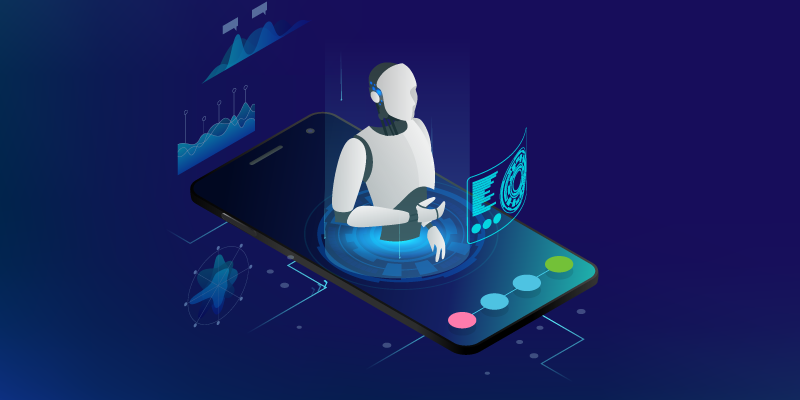Engineering & Construction industry transformation by AI
3AI April 5, 2018

AI can help stakeholders in the $10 tn per year construction industry plan, optimise design, mitigate issues, aid in risk assessment and work qualitatively.
Why AI in construction?
Of all the game-changing innovations driven by technology and artificial intelligence in the world today, the potential of one key sector remains untapped – the construction industry.
According to McKinsey, the engineering and construction sector globally is valued to be worth $10 tn per year. While that is a respectable size, the construction industry overall has largely been slow in the uptake of inventions in the technology arena. In fact, several construction business houses in India tend to be family-owned and extremely traditionally-run, and have tremendous inertia in embracing new age technologies.
However, the past few years is seeing a change in the way construction firms operate. With well-funded global start-ups such as WeWork entering the fray with an AI and analytics forward approach to real estate development; industry incumbents need to up their game in order to stay relevant. While McKinsey expects the permeation of AI in the construction industry to be modest right now, it does represent an opportunity for early adopters to catch the bull by the horns and build a sizeable competitive advantage. Those from this industry that have a ponderous and slow uptake of new technology will surely be eaten up by their competitors. Through this article, we explore some artificial intelligence interventions that can be transformative for the construction and real estate industry at large.
Image recognition for managing risk, safety and quality
AI-powered image recognition has grown by leaps and bounds in the past few years. Algorithm accuracy in image detection has improved substantially due to advances in deep learning and neural networks. Numerous use cases of image recognition and video analytics are now being seen in areas as diverse as retail, consumer goods, insurance, healthcare, etc.
The construction industry would do well to adopt these techniques and apply them to manage risk and worker safety. Working conditions in the construction industry for labourers tend to be managed mediocrely at present. We hear of numerous cases of mortality and severe injuries where workers do not follow established safety procedures. Other cases also include unsafe working environments where certain infrastructure in overall construction projects are unsafe for human work.
Construction companies could employ drones to capture images and videos of their construction sites on a continuous basis. By applying deep learning and other AI techniques, firms would be able to identify unsafe workplace behaviour as well as unsafe working environments and run training interventions to improve the safety quotient of their workplaces.
Continuous design optimisation
Construction activity has largely been seen as a waterfall-like process where all the designs, construction materials and their feasibility are evaluated at the start of the project. While this is undoubtedly a watertight approach to construction, it does cause delays in planning, leading to lost revenue opportunity in the near term.
Today, with data readily available for analysis, AI can help continuously optimise the design of each project. A recommender system-like approach would help contractors and engineers identify the right design as well as the materials required to execute it. Additionally, AI-powered technology could also help recommend architectural finishes based on the proposed design – thus enabling construction firms to finalise the design and material requirements early in the schedule, and finish construction faster.
Increasing talent retention and development
The construction sector is remarkably disorganised and heavily relies on contract labour for executing a project. While minor, the cost and time involved in fulfilling positions left by ex-labourers and training new entrants really adds up and reduces the overall efficiency in project management. In India, contract labour can often also be seasonal, with numerous workers migrating to their hometowns in droves leading to longer gestation periods for projects.
AI has been applied to talent retention and talent development use cases in multiple industries, and the same can be applied to the construction industry with relative ease. With unsupervised machine learning algorithms, contractors and their parent companies will be able to forecast talent shortage accurately, and plan to backfill labour resources efficiently. AI can also enable improved labour retention strategies by recommending best options for ensuring improved talent retention and availability.
Project schedule optimisation
Construction projects are typically long drawn with a sizeable period elapsing between envisioning the project to having it commercially ready. In this period, we often see many niggles with respect to the project schedule. Overuse of materials, time-consuming nature of restocking, people availability issues – all these can throw the overall project plan into disarray.
Having an AI-backed schedule optimisation and forecasting solution can reduce the time and cost overruns associated with these delays. Using the data from benchmarked previous projects, managers would be able to run sophisticated analyses using AI to forecast the timelines of the next activity in the construction cycle.
Preventive maintenance through AI
Maintenance in the construction industry happens largely at two levels. Firstly, it is the maintenance of a partially and incrementally developing property. The second is when the builder organisation is responsible for the continuing maintenance after it has been leased out to tenants. At both levels, maintenance can be a hugely cumbersome and time-consuming activity, albeit critical, that the construction company must perform in order for operations to move smoothly.
We live in a world of sufficiently advanced technology and AI can complement human effort in the process of preventive maintenance. By using sensors and cameras as the data capture layer, and applying machine learning algorithms over the data, facility managers can monitor their property with greater ease and identify guided interventions on where maintenance activity is required. Using this data can be doubly productive as it will provide the system inputs on when routine maintenance activity for all the working components of a modern property are required, and schedule accordingly.
A technology-driven paradigm shift is fast coming for the construction industry. As things stand right now, the industry employs close to 7 percent of the global labour workforce. The strong uptake of infrastructure projects notwithstanding, the sector has grown only 1 percent per year for the past decades – with a flatlining per worker productivity, incumbents would do well to embrace the wave of Artificial Intelligence to power their next phase of growth. Using AI techniques, engineering and construction industry giants would be able to accelerate productivity, increase business efficiency and bring a much-needed technology facelift to the industry.






